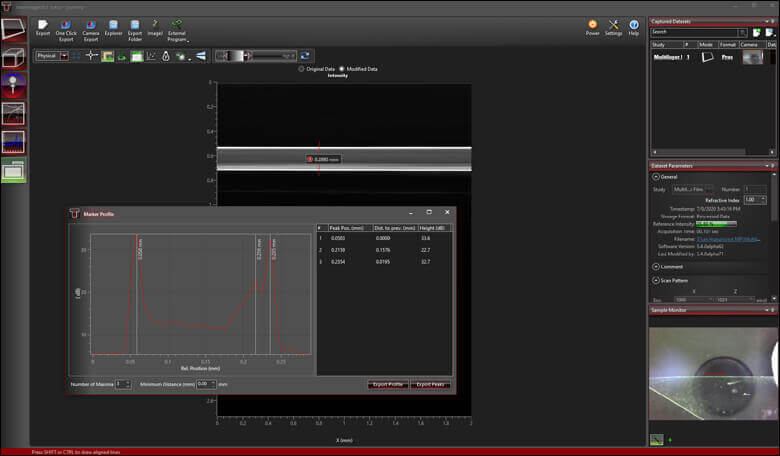
How to Measure C++ Time Intervals
Estimating the execution time of a C++ program or of parts of it is sometimes harder than it ought to be, as numerous strategies are regularly not compact to different stages. Picking the correct strategy will rely to a great extent upon your OS, your compiler form, and furthermore on what you mean by 'time'.
This article incorporates an extensive rundown with probably the most ideal choices right now accessible, alongside the impediments of everyone. Ideally, here you will discover at least one choices that you can use for your program.
Wall Time vs CPU Time
To begin with, it is critical to characterize and separate these two terms that are regularly utilized when estimating execution time.
- Wall time (otherwise called clock time or wall-clock time) is basically the complete time passed during the estimation. It's the time you can quantify with a stopwatch, expecting that you can begin and stop it precisely at the execution focuses you need.
- CPU Time, then again, alludes to the time the CPU was occupied with handling the program's directions. The time spent trusting that different things will finish (like I/O activities) is excluded from the CPU time.
Which one of these definitions you should utilize relies upon why you are estimating your program's execution time in any case? In the rundown underneath, most techniques process just one of those sorts of time, while a couple can register both. Likewise critically, some are accessible both for Linux and Windows clients, however others are restricted to a particular working framework. To make it simpler for the readers, we recorded expressly toward the start of each segment which sort of time every strategy measures and on which systems it is accessible.
We can discover the time taken by various pieces of a program by utilizing the std::chrono library presented in C++ 11. The functionalities implemented in C are upheld in C++ as well yet they are C specific. For perfect and strong C++ programs we ought to endeavor to utilize C++ specific language develops as it were.
std::chrono has two particular objects timepoint and span. A timepoint as the name proposes speaks to a point in time while a term speaks to an interval or length of time. The C++ library permits us to deduct two timepoints to get the interval of time passed in the middle. Utilizing gave strategies we can likewise change this term over to proper units.
The std::chrono gives us three clocks with shifting precision. The high_resolution_clock is the most exact and henceforth it is utilized to gauge execution time.e
Notes on the code Examples
The code models included underneath depend on projects that register a guess for the infinite sum 1/2⁰ + 1/2¹ + 1/2² + 1/2³ + … = 2. While 100 emphases of the loop are a lot to get to the specific whole (in any event on my machine — results may shift on different stages), those projects perform 1 billion cycles to have a lot of time to quantify.
In those projects, the CPU is occupied practically 100% of the time, so there will be not really any distinction between wall time and CPU time. In the event that you need to make the CPU inactive for quite a while during the investigations, you can without much of a stretch do it with the capacity rest() (accessible in <unistd.h>).
To gauge execution time in C++ utilizing classes from the standard library, follow these three stages:
- Call high_resolution_clock::now toward the beginning and finish purposes of the bit of code to be estimated.
- Create an occasion of the term class with the contrast between the beginning and finish time focuses recorded from Step 1.
- Invoke the duration::count technique to get the slipped by time (in short order).
As a C++ developer, it tends to be extraordinarily useful realizing how to quantify execution time in C++ for specific segments of code. That is on the grounds that understanding execution time intervals can be utilized for dissecting and improving significant execution ways, or differentiating and looking at changed alternatives for algorithms and data structures.
Presently, how about we begin with our rundown.
Start your 30-day free trial to learn the in-demand programming languages, and advance your career in the high-paying field of web development.
1. Utilizing the 'Time' Linux Command
Deals with: Only Linux. (This can really be utilized for any program that you can execute from the terminal.)
Measures: Both wall time and CPU time.
Alright, this isn't actually C++ code. However, since it will likely be sufficient for some, individuals running Linux, we chose to incorporate this choice before the more muddled ones. On the off chance that you just need to quantify the CPU or potentially wall time for your whole program, you don't actually have to change your code for that. Simply compose time before what you would generally write to run your program from the terminal command line. At that point, when your program is finished executing, the measured times will appear on the screen. Like this:
$ time ./MyProgram
Result: 2.00000000000000000000
real 0m5.931s
user 0m5.926s
sys 0m0.005s
In the yield, real signifies wall time and user signifies CPU time, so there you have the two estimations for your whole program, without changing a line of code. Nonetheless, on the off chance that you need to quantify the time taken by separated pieces of your program, at that point you will require one of the different choices beneath.
Note: Before composing this, we generally expected Windows to have its own form of the time order for its order brief, so we were really astonished when we discovered it hasn't. Whenever intrigued, you can locate a couple of choices on the web, however, we surmise that implanting the time estimations straightforwardly into your C++code ought to be more versatile.
2. Utilizing <chrono>
Chips away at Linux and Windows, yet require C++11 or later.
Measures: Wall time.
This is likely the awesome most compact approach to quantify wall time these days, yet it is just accessible on C++11 and later forms. In the event that your IDE/compiler doesn't uphold C++11 you will require one of the different choices recorded in this article.
The <chrono> library approaches a couple of various checks in your machine, every one of them with various purposes and qualities. On the off chance that you need, you can get more subtleties on each kind of clock here. Be that as it may, except if you truly need an alternate clock, we would suggest just utilizing high_resolution_clock. This one uses the clock with the most elevated goal accessible, so it is likely satisfactory for a great many people.
One alternative for estimating execution times (for a bit of C++ code) is to utilize a few classes that are accessible as a component of the C++11's standard library.
The high_resolution_clock class, characterized in the standard <chrono> header, can prove to be useful here. As its name recommends, this class speaks to a clock with the most elevated accuracy (or proportionately, the littlest tick time frame) accessible on a given stage. The high_resolution_clock uncovered the "now" strategy, which restores a worth relating to the call's point in time.
You'll need to conjure this strategy twice:
- At the starting part of the code
- At the completion of that portion
Utilizing this technique, we record the beginning and the completion time of the execution.
include <chrono> // for high_resolution_blog
...
// Record start time
auto start = std::chrono::high_resolution_clock::now();
//portion of code to be timed
...
// Record end time
auto finish= std::chrono::high_resolution_clock::now();
As we can note from the above code test, the high_resolution_clock class is characterized under the std::chrono namespace, and the now strategy is static. This implies that you don't have to make another instance of the high_resolution_clock class.
You'll additionally see that the return kind of the now strategy is protracted: std::chrono::time_point<std::chrono::high_resolution_clock>.
Fortunately, you can utilize the C++11's auto watchword to help decrease that messiness and increment code clarity.
Whenever you've recorded the beginning and finish time of a given segment of code, you can utilize another class (the name of this class is length and it speaks to a time interval) of the equivalent std::chrono namespace to get the measured time.
You can build an occurrence of this class utilizing the beginning and finish time recently recorded:
std::chrono::duration<double> slipped by = finish - start;
When that is in, you can summon the check technique for the length class to get the slipped by time estimated in short order:
std::cout << "Slipped by time: " << elapsed.count() << " s\n";
3. Utilizing <time.h> and clock()
Chips away at: Linux and Windows.
Measures: CPU time on Linux and wall time on Windows.
The function clock() restores the quantity of clock ticks since the program began executing. On the off chance that you partition it by the steady CLOCKS_PER_SEC you will get how long the program has been running, in seconds. Nonetheless, this will have various implications relying upon the OS: On Linux, you will get CPU time, while on Windows you will get wall time. So you must be cautious when utilizing this one.
Final Words
Indeed, the writing is on the wall: a lot of approaches to quantify execution time on C/C++. As should be obvious, there is anything but a one-size-fits-all arrangement: all strategies above have impediments and none of them can figure both wall time and CPU time and is accessible both for Linux and for Windows. By and by, we expect that at any rate one of these techniques works for your code and for what you are focusing on. You currently have a couple of procedures in your toolbox that can be utilized to quantify execution time in C++. Keep in mind, this can prove to be useful when:
- Attempting to decide how long is spent in certain parts of C++ code
- Differentiating and looking at a few algorithms and decisions of information to advance for execution speed
Connect with our experts to learn more about our web development courses and certification training.
